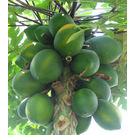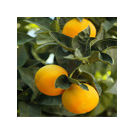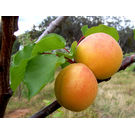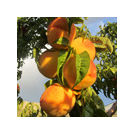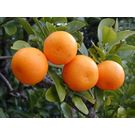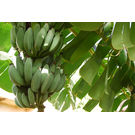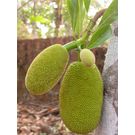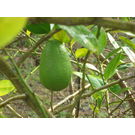Hybrid Sweet Orange Plant
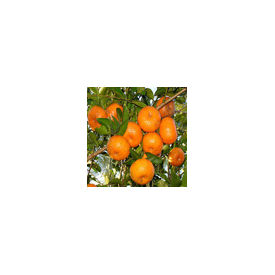
Description
The orange has become the most commonly grown tree fruit in the world. It is an important crop in many part of the world.One of the most widely favored of the world's fruits, the orange, sweet orange.
The orange tree, reaching 25 ft (7.5 m) or, with great age, up to 50 ft (15 m), has a rounded crown of slender branches. The twigs are twisted and angled when young and may bear slender, semi-flexible, bluntish spines in the leaf axils. There may be faint or conspicuous wings on the petioles of the aromatic, evergreen, alternate, elliptic to ovate, sometimes faintly toothed "leaves"–technically solitary leaflets of compound leaves. These are 2 1/2 to 6 in (6.5-15 cm) long, 1 to 3 3/4 in (2.5-9.5 cm) wide. Borne singly or in clusters of 2 to 6, the sweetly fragrant white flowers, about 2 in (5 cm) wide, have a saucer-shaped, 5-pointed calyx and 5 oblong, white petals, and 20 to 25 stamens with conspicuous yellow anthers. The fruit is globose, subglobose, oblate or somewhat oval, 2 1/2 to 3 3/4 in (6.5-9.5 cm) wide. Dotted with minute glands containing an essential oil, the outer rind (epicarp) is orange or yellow when ripe, the inner rind (mesocarp) is white, spongy and non-aromatic. The pulp (endocarp), yellow, orange or more or less red, consists of tightly packed membranous juice sacs enclosed in 10 to 14 wedge-shaped compartments which are readily separated as individual segments. In each segment there may be 2 to 4 irregular seeds, white externally and internally, though some types of oranges are seedless. The sweet orange differs physically from the sour orange in having a solid center.
You may also be interested in
Look for Similar Items by Category
- Home > Fruit Plants > Orange


